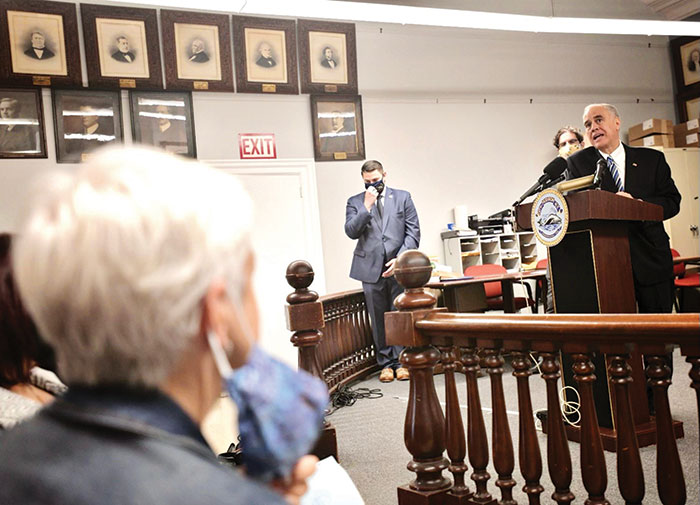Photo Courtesy of Comptroller DiNapoli
“It is critical that the city’s Department of Education be clear about how it will help students recover from the impact of the pandemic and address inequalities in the provision of educational services,” Comptroller DiNapoli said.
By Forum Staff
The City should avoid creating new risks, while failing to address existing risks, in the Department of Education’s budget, according to a report released Thursday by State Comptroller Tom DiNapoli.
The City has expanded existing programs and implemented new programs to address the educational shortfalls and inequities created by the COVID-19 pandemic, but several of them are expected to last well after federal funding sources dry up at the end of fiscal year 2025. If revenues do not trend better than projected, the city may be forced to cut services or find new revenue sources or funding partners.
DiNapoli’s report details the DOE’s response to the COVID-19 pandemic, the impact of the pandemic on attendance and enrollment, difficulties in measuring student achievement and learning loss, and budgetary risks that arise from the reliance on federal aid. The DOE is set to receive more than $8 billion in emergency federal funding between fiscal years 2021 and 2025, including $6.96 billion in education-related emergency federal funds between 2020 and 2024, $721 million in CARES Act allocation, and additional unrestricted federal emergency funding.
The DOE’s FY 2022 budget reached $37.7 billion and accounts for more than 38 percent of the City’s total expenditures. Even prior to the pandemic, the DOE faced recurring risks to its budget. Longstanding weaknesses in the DOE’s forecasts for spending on charter school tuition, services for students with disabilities, and pupil transportation consistently required the city to add hundreds of millions of dollars more than planned to the department’s final budgets. The largest risk to the DOE’s budget in the years prior to the pandemic was the city’s out-year projections of growth in State education aid.
DiNapoli made several recommendations for the DOE to continue to provide a safe and high-quality education in the future, including:
- Ensure frequent, regular, and clear communication with staff, parents, and students about its decisions and operational protocols.
- Assess student progress to determine whether new programs are helping students overcome learning loss and close the achievement gap.
- Leverage DOE infrastructure to expand vaccine access to younger children to help provide protection against the virus and increase safety systemwide as students return to school buildings.
- Acknowledge existing budgetary risks and commit to prudent long-term financial planning to identify resources to ensure the continued provision of necessary services to students.
“New York City’s school faculty and staff, as well as students and families have been resilient and resourceful in the face of the challenges posed by the COVID-19 pandemic,” DiNapoli said. “It is critical that the city’s Department of Education be clear about how it will help students recover from the impact of the pandemic and address inequalities in the provision of educational services. Historic federal investment has provided an opportunity to meet short-term challenges, but it won’t last forever. I urge the department to address future budgetary risks and commit to prudent long-term financial planning, to ensure its ability to sustain high-quality educational services over the long-term.”

